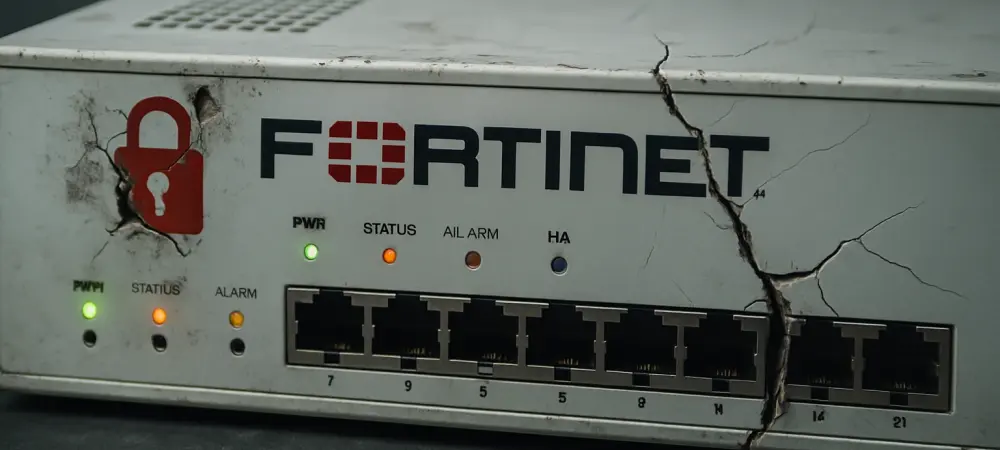In a digital landscape where cybersecurity threats evolve at an alarming pace, a severe flaw in a widely used security software has recently come under intense scrutiny, sending shockwaves through the tech community and exposing organizations to significant risks. This vulnerability, nestled within a critical component of Fortinet’s ecosystem, has become a prime target for malicious actors, heightening the danger of data breaches and system compromise. The urgency of the situation cannot be overstated, as reports confirm active exploitation by cybercriminals who are capitalizing on the flaw with startling speed. As businesses and security experts scramble to address the issue, the incident serves as a stark reminder of the relentless pace at which threats emerge and the critical importance of swift response mechanisms. This unfolding crisis not only highlights the vulnerabilities inherent in complex software integrations but also underscores the ever-present challenge of staying one step ahead of attackers in a constantly shifting threat environment.
Unpacking the Technical Flaw
Understanding the SQL Injection Risk
At the heart of this cybersecurity crisis lies a critical unauthenticated SQL injection vulnerability, identified as CVE-2025-25257, within Fortinet’s FortiWeb Fabric Connector. This software component, designed to integrate Fortinet’s FortiWeb firewall with other products for enhanced security, has become a gateway for attackers to execute unauthorized SQL commands via carefully crafted HTTP or HTTPS requests. Such exploitation can severely undermine system integrity, potentially granting malicious actors access to sensitive data or control over affected systems. The severity of this flaw stems from its unauthenticated nature, meaning attackers require no prior access or credentials to exploit it, broadening the scope of potential targets. Fortinet has acknowledged the gravity of this issue through an urgent advisory, emphasizing the need for immediate action to safeguard systems. This vulnerability exemplifies how even robust security tools can harbor critical weaknesses that, if left unaddressed, pose catastrophic risks to organizational security.
Scope and Impact of the Vulnerability
The implications of this SQL injection flaw extend far beyond a mere technical glitch, as it directly threatens the core functionalities that many organizations rely on for dynamic security protections. FortiWeb Fabric Connector supports essential features like single sign-on integration and policy enforcement, making it a linchpin in many enterprise security architectures. When compromised, these systems can expose critical infrastructure to unauthorized access, data theft, or even broader network breaches. Reports indicate that the vulnerability has already affected a significant number of FortiWeb instances, with active exploitation detected across multiple sectors. The Cybersecurity and Infrastructure Security Agency (CISA) has added this flaw to its catalog of known exploited vulnerabilities, a move that signals the widespread concern over its potential impact. This situation serves as a critical wake-up call for organizations to reassess their dependency on integrated security solutions and the inherent risks that come with such complex interconnections.
Response and Mitigation Strategies
Current State of Exploitation and Industry Reaction
The active exploitation of this Fortinet vulnerability has been closely monitored by cybersecurity entities, with organizations like the Shadowserver Foundation providing detailed insights into the scale of the threat. Initial reports highlighted a peak of compromised FortiWeb instances, though subsequent data showed a decline in affected systems, suggesting that some mitigation efforts are beginning to take effect. Despite this slight improvement, the threat remains urgent, as dozens of systems are still reported as vulnerable or compromised. Experts from the cybersecurity community, including voices from watchTowr and VulnCheck, have noted the alarming speed at which threat actors exploit such flaws, often outpacing the ability of organizations to deploy patches. Fortinet’s updated security guidance, alongside CISA’s involvement, reflects a unified push to address the issue, yet the uncertainty surrounding the identities and motivations of the attackers adds a layer of complexity to the response efforts. This dynamic underscores the critical need for real-time threat intelligence in combating such rapidly evolving risks.
Steps for Immediate Protection and Long-Term Defense
Addressing this vulnerability demands a multi-faceted approach, starting with the immediate application of patches released by Fortinet to seal the SQL injection flaw in the FortiWeb Fabric Connector. For organizations unable to patch promptly, disabling the affected administrative interface offers a temporary shield against exploitation, though it may disrupt certain functionalities. Beyond these urgent measures, there is a pressing need for broader cybersecurity strategies, including regular vulnerability assessments and proactive threat management to identify and mitigate risks before they are exploited. The collaborative efforts within the industry, exemplified by research contributions from entities like GMO Cybersecurity, highlight the importance of shared knowledge in tackling such threats. Looking ahead, organizations must prioritize building resilient security frameworks that can withstand the increasing sophistication of cybercriminals. This incident, while alarming, provides a valuable lesson in the necessity of agility and preparedness in the face of relentless cyber threats.

